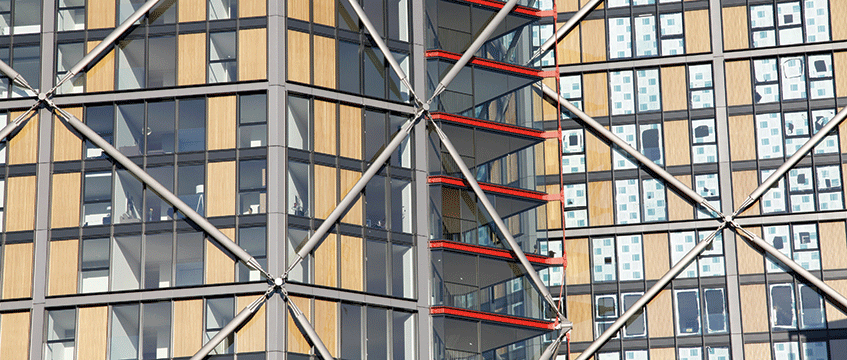Nuisance is a tort, or civil wrong, that affects land, or interests in land, involving an encroachment on to or physical injury to land, or an unlawful interference with the enjoyment of it.
This last category of nuisance operates to protect landowners from noise, smoke, smell, dust and other emanations from neighbouring properties – and came under the spotlight in Fearn and others v Board of Trustees of the Tate Gallery [2020] EWCA Civ 104; [2020] PLSCS 22.
A goldfish bowl
The question that arose was whether the tort of nuisance is capable of protecting homeowners against neighbours who invade their privacy. The litigation concerned apartments situated in London, which had floor-to-ceiling glass panels that offered the owners spectacular views across the city. But visitors to the viewing gallery on the 10th floor of Tate Modern were able to see into the apartments too, causing the owners to complain about intrusions into their privacy of their homes and to seek an injunction requiring Tate Modern to close, or screen off, part of the viewing gallery.
The High Court decided that the extensive use of glass in apartments belonging to city dwellers made them particularly sensitive to overlooking. The owners could install curtains or blinds for privacy, and it would be wrong to allow their self-induced exposure to the world to create a liability in nuisance.
But the owners of the apartments did make a significant legal breakthrough. The Human Rights Act 1998 gives effect to the European Convention on Human Rights, which confers a right to respect for private and family lives, and for homes: see Article 8. And the judge decided that this made it possible for him to conclude that the law of nuisance was, in principle, wide enough to protect domestic homes from overlooking in appropriate cases.
Pyrrhic victory
The owners of the apartments attacked the judge’s approach to their sensitivity and self-exposure in the Court of Appeal – and won. But that was cold comfort to them, because the court invited the parties to address the question of whether there was actually a cause of action in private nuisance at all. And, after hearing their arguments, the Court of Appeal decided that the tort of nuisance does not extend to overlooking.
The court reminded the owners of the apartments that the law does not always provide a remedy for annoyance suffered by neighbours, however considerable it may be. It explained that the authorities, which included Turner v Spooner (1861) 30 LJ Ch 801, Tapling v Jones (1865) 20 CBNS 166 and Chandler v Thompson (1911) 3 Camp 80, favoured Tate Modern, and could see no sound reason for extending the law to protect landowners from being overlooked.
It might be thought that this was a clear case of nuisance at one end of the spectrum. But if the tort of nuisance were to include overlooking, where should the line be drawn between what was and was not legal? Would the construction of a balcony that deprives all or part of a neighbour’s garden of its privacy, particularly in summertime, and which might reduce the marketability or value of the overlooked property, constitute a nuisance too? Would it make a difference if more than one family were to use the balcony, or if there were two or more balconies?
Alternative controls
This case involved complex issues affecting public and private interests in a part of London that draws millions of visitors every year, and the Court of Appeal considered that the planning system offers a more appropriate form of control than the right to bring actions in private nuisance. Furthermore, a ruling in favour of the owners of the apartments could lead to clashes between planning decisions (where objections to planning applications based on overlooking have been rejected) and the law of nuisance.
English courts should keep pace with, but not go beyond, the European Court of Human Rights, and there had never been a case in Strasbourg in which mere overlooking by neighbours or their invitees has been held to be a breach of Article 8. Furthermore, parliament had already enacted laws on confidentiality and misuse of private information, as well as the Data Protection Act 2018 and the Protection from Harassment Act 1997, and it would be preferable for it to formulate any additional laws perceived to be necessary to deal with overlooking.
Sensitivity and self-exposure
Had it ruled in favour of the owners of the apartments, the Court of Appeal explained that the question of whether an action has caused a nuisance does not turn on the court’s assessment of the respective reasonableness of each party’s behaviour in all the circumstances. The requirements as to what claimants and defendants must prove represent the law’s assessment of what is, and is not, unreasonable and what will give rise to a remedy.
Defendants must show that their actions are “necessary”, a word whose meaning is coloured by association with the ordinary use and occupation of land and houses, and that they have taken their neighbour’s interests into proper consideration. But the judge had not found that the viewing gallery was “necessary” for the ordinary use and occupation of the Tate. And, once it was established that the use of the flats was ordinary and reasonable having regard to the locality, which it was, and that the use of the viewing balcony had caused material damage to their amenity value, an assessment of the particular sensitivities of the apartments and of the steps that could be taken to counter overlooking was contrary to the general principles of the law on private nuisance.
Allyson Colby is a property law consultant









